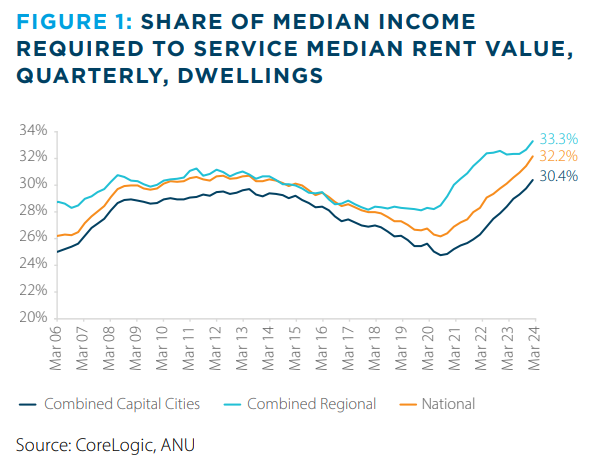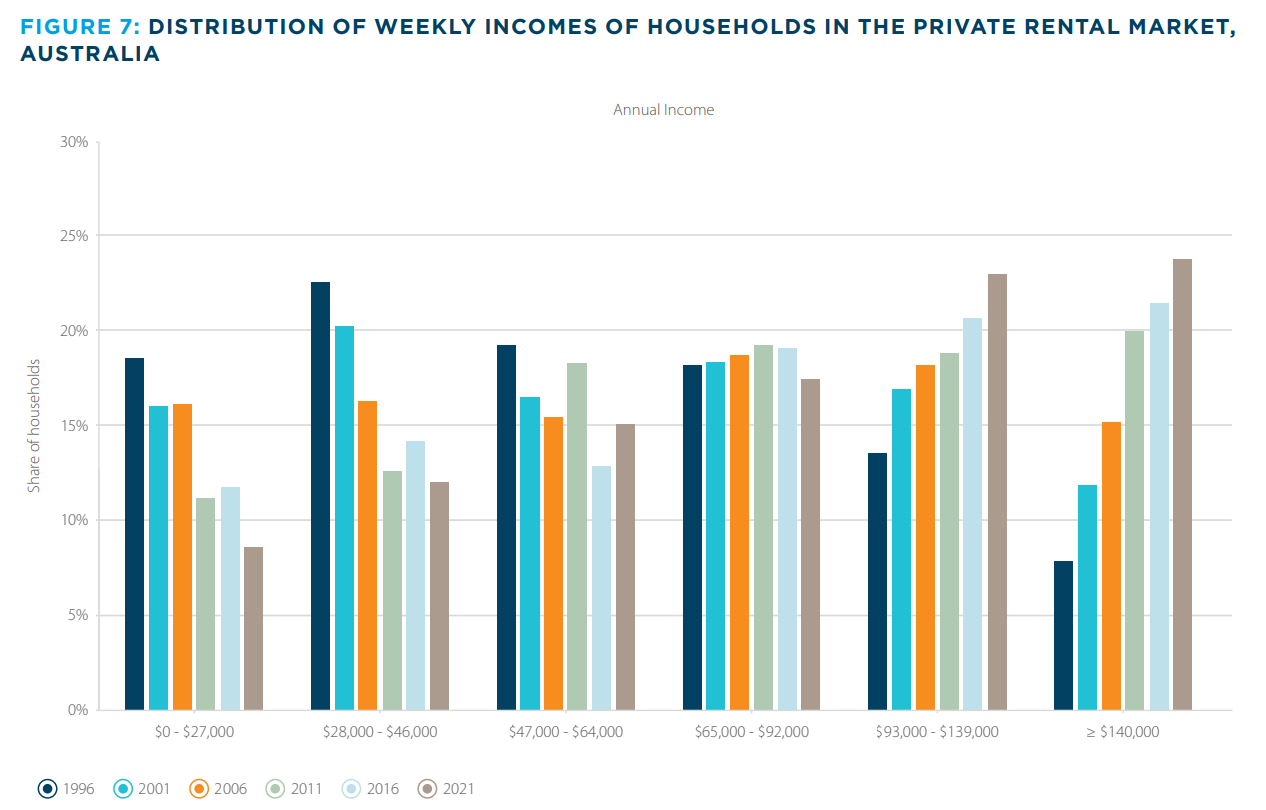The latest ANZ CoreLogic Housing Affordability report notes the vast deterioration in the rental market.
Rapid rental cost inflation means that the portion of income required to service rents has shifted to the 30% range from the mid-20% range for median income earners in most parts of the country.
“The portion of median income required to service median new rents reached a series high of 32.2% in March 2024, as median new rents reached $621 per week (Figure 1)”, notes the report.

This rental squeeze is hitting low income earners especially hard.
“For a household at the 25th percentile of income nationally (earning an estimated $961 per week), the 25th percentile rent value ($521 per week) would require payment of 54.3% of income. This is a series high for the low-income segment”, notes the report.
“The 25th percentile income and rent have seen the biggest deterioration in affordability since the start of the pandemic, jumping 10 percentage points”.

“Since the start of the pandemic in March 2020, national 25th percentile rents have risen the most in percentage terms, up 42.3% (or $155 per week), compared to a median rise of 41.4% ($182 per week) and an increase at the 75th percentile value of 37.4% ($204 per week)”.

Meanwhile, higher income earners are also being thrown onto the rental market, presumably because the purchase cost of housing has risen beyond reach. In turn, this is squeezing out lower income earners.

“The higher income grouping with annual income of $140,000 per year (in 2021 dollars), went from 8% of the private rental market in 1996 to 24% in 2021”, the report notes.
“Part of the reason for higher income households in the private rental market over time likely comes back to longer term declines in the rate of home ownership”.
“This demographic shift in the rental market may be creating greater competition for lower-income renting households”.
The rental situation is projected to worsen as immigration demand outstrips supply:
“Supply and demand pressures remain high for Australia’s rental market more broadly”.
“On the demand side, there has been a rapid increase in the population alongside a decline in the number of people per home”.
“Net overseas migration in the year to September was more than 548,000”.
“Assuming an average household size of 2.5 people, net overseas migration levels implied around 220,000 additional households in the year to September 2023. At a time where supply constraints persist in residential construction, with only 173,480 new dwellings completed in the same period”.
“This shortage is evident in CoreLogic data on residential vacancies. The CoreLogic national vacancy rate was 1.2% as at November 2023. Total rent listings have sunk to the lowest levels since 2013”.
Australia’s rental crisis will worsen so long as the federal government continues to run a mass immigration policy into a supply restricted market.

